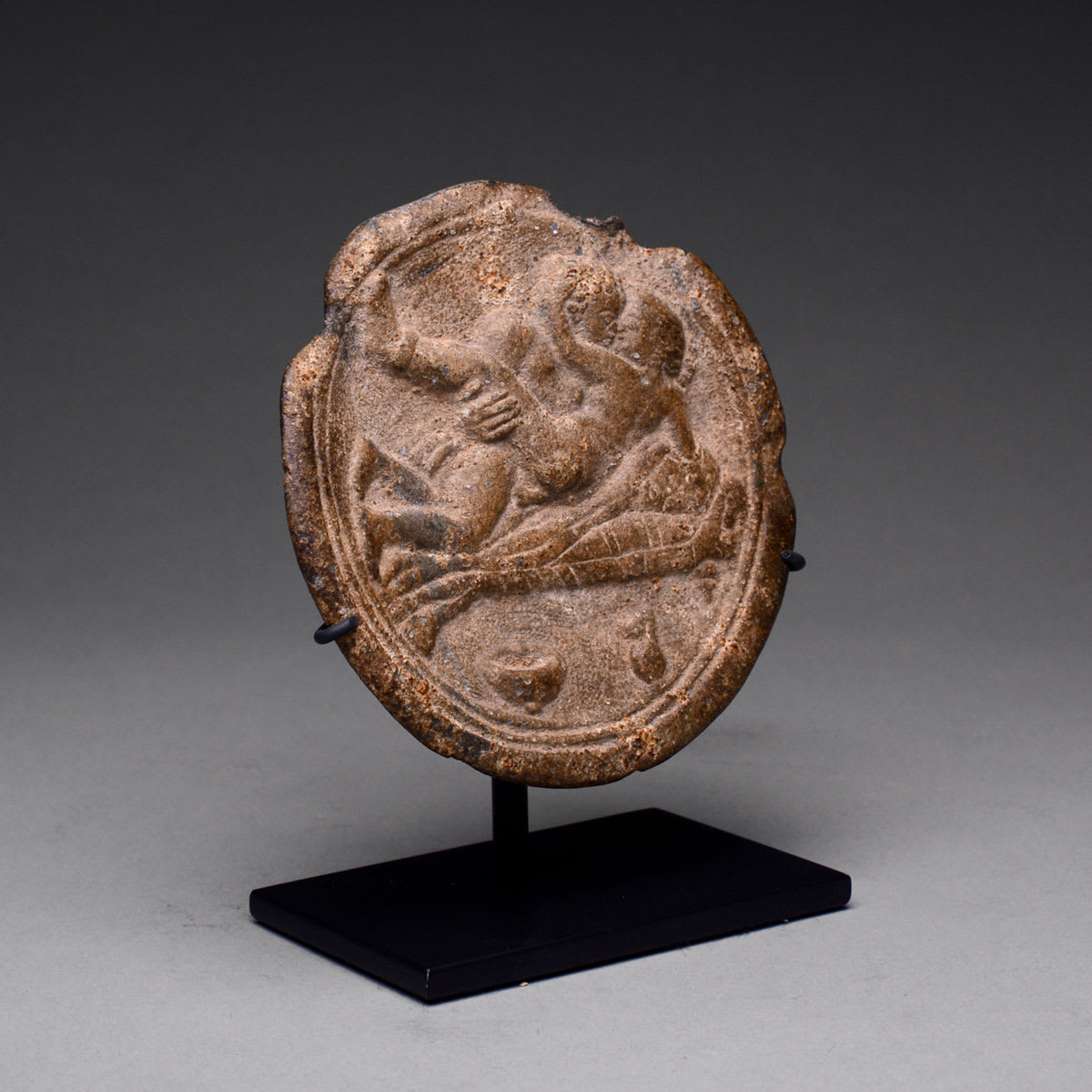Roman Lead Erotic Plate, 100 CE - 300 CE
Lead
10.2 x 10.2 cm
4 x 4 in
4 x 4 in
CK.0003
Further images
The rediscovery and subsequent excavations of Pompeii and Herculaneum in the 18th century provided many fascinating insights into daily life during the height of the Roman Empire, including the near...
The rediscovery and subsequent excavations of Pompeii and Herculaneum in the 18th century provided many fascinating insights into daily life during the height of the Roman Empire, including the near ubiquity of erotic or sexually themed art and imagery in frescos, inscriptions, and household goods found throughout the cities. While our modern mores may lump all of this imagery together under the banner of pornography, to the Ancient Romans some of this work may have served a fertility function, while other was clearly meant to be for pure erotic pleasure. Among the most famous imagery are the frescos found decorating the walls of a brothels, perhaps representing a selection of services offered at the establishment, perhaps merely setting the mood. Beyond the scope of these two cities, the canon of Roman art is filled with eroticism, from marble sculptures to small bronze amulets. Among the most prevalent are examples are terracotta oil lamps decorated with molded scenes of copulating couples in a variety of positions and practices.
This small lead dish depicts a heterosexual couple engaged in sexual intercourse. They are shown lying upon a couch-like bed, known as a lectus, with the man on top, lifting on of the woman’s legs up in the air as she wraps her arm around his head, pulling him towards her. Underneath the lectus is a bowl and amphora. Rendered in low relief, this scene is consistent with those found on molded erotic oil lamps. But whereas the imagery of the oil lamp would have been immediately obvious, the scene found here may have been hidden beneath food such as nuts or olives, awaiting the viewers surprise and delights as they “unveiled” the piece.
This small lead dish depicts a heterosexual couple engaged in sexual intercourse. They are shown lying upon a couch-like bed, known as a lectus, with the man on top, lifting on of the woman’s legs up in the air as she wraps her arm around his head, pulling him towards her. Underneath the lectus is a bowl and amphora. Rendered in low relief, this scene is consistent with those found on molded erotic oil lamps. But whereas the imagery of the oil lamp would have been immediately obvious, the scene found here may have been hidden beneath food such as nuts or olives, awaiting the viewers surprise and delights as they “unveiled” the piece.







